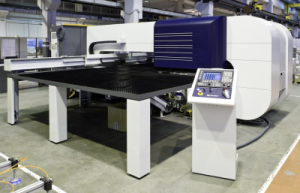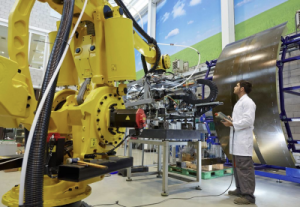Introduction
When trying to set up your manufacturing process, you have various choices as a manufacturer involved in metal sheet fabrication, and many suppliers can assist you as well. Using your business case as well as the values of your organization, whom the supplier you choose should ideally match, you will decide which individual or parties to approach. Press brakes, a completely automated bending machine, a mix of these, or another option will depend on the results of your business case. What results are you looking for? What degree of adaptability? What kind of product? What is your intended spending limit, or better yet, what profit on investments do you hope to get?
A bending machine can serve as both a press and a bending machine, unlike a press brake, which can only be used as a press. In opposition to the press, the bending machine can bend any profile. There are some profiles, nevertheless, that a press cannot simply bend but a bending machine can. In order to provide a “safe edge,” the upper flange can act as a press and compress sheets that have already been bent.
The characteristics of an automated bending machine and a press brake have certain similarities like But there are specific differences as well.

Let’s dig into some of the differences between a press brake and a bending machine.
Flexibility and cycle time:
There is a lot of versatility offered by both of these methods. The CNC bending method used by the bending machine offers a significant amount of flexibility in regard to the geometry of the bend. In comparison to a press brake, the bending machine enables you to produce more complex shapes.
Press brakes, with an average cycle time of 150 seconds per sheet, have the greatest cycle times. Assuming no robots are used and that everything is done manually. On the other hand, when using a bending machine, the bends are executed sequentially. Because the bending machine tasks are carried out independently, a cycle time of 6 to 15 seconds can be accomplished for each sheet.
Production speed
The press brake provides a little speed advantage for greater volumes and materials that are simple to handle (like a thin corrugated sheet in smaller dimensions). This benefit, however, does not apply to unique production, small batches, moderate series, or bespoke fabrications. Besides, the folding machine is advantageous for bending sheets that are challenging to handle (large deviations in shape and thickness). Because it takes more work to handle the sheets both inside and outside of the machine, the speed time and efforts brake saves in the process of bending is lost. Moreover, CNC press brake machines are surely beneficial technological advancement in the industrial sectors that proves to enhance production speed.

Automation
As press brakes are not a fully automated process and require manual efforts, manufacturers are using press brakes less frequently as a result of product quality and safety concerns, as well as the fact that fewer employees desire to do hard, repetitive work. Most profiles involve a tool change, which results in setup times. Only by changing tools, always with a specialized tool, and then only for a specific radius is it feasible to bend a radius. Additionally, the various procedures leave unsightly press marks on the rounded plate’s surface.
You may create products that are of the highest quality and are incredibly consistent by automating the entire process, like in the case of a completely automated metal sheet bending machine.
In a bending machine, numerous profiles can be created without changing tools. With a bending machine, a radius can be bent whenever you want without replacing tools. Simply changing the bending angle will allow you to achieve any radius between 20 mm and 5000 mm. A motorized back gauge must be used in conjunction with the radius bending function, which comes standard with a plain rail. Without any obvious press marks on the exterior face, the bending produces a smooth, curved surface.

Space
A fully automated bending machine will take up the greatest space, and if space is a factor in a business plan, you will discover that a press brake takes up the least. However, your business case should take other factors into account. In order to accomplish the very same cycle time as a bending machine, you will additionally require 10 to 25 press brakes.
Conclusion
However, which of the two options is the best?
Analyze the ROI while looking at the criteria in your business case. Budget-wise, a press brake obviously has far lower costs than a bending machine. However, there are other factors that go into your business case as well. What level of flexibility, output, and product quality are needed? Which vendor best complements your business? Which vendor will be able to assist you throughout the future? Determine the greatest match for you by calculating the ROI by using key performance metrics including retail price, bending forms, cycle time, switching time, staff input, as well as technical availability.































